Marsala sits quietly on Sicily’s western coast, and honestly, it pulled me in the moment I got there. This ancient town isn’t just another spot on Italy’s map—it’s where history and winemaking blend as smoothly as the fortified wine that carries its name.
Marsala claims Italy’s largest continuous wine-growing region. You’ll still find historic wineries from the 19th century turning out the famous liqueur wine that’s made this area a global name.
Wandering Marsala, I feel like I’m walking through stacked layers of time. The place started as Lilybaeum on Cape Boeo (also called Lilibeo), and Marsala wears its Punic roots with pride.
But there’s more than wine here. Saltpans, the gorgeous Stagnone lagoon, and a cultural legacy pop up in every weathered stone and ancient building.
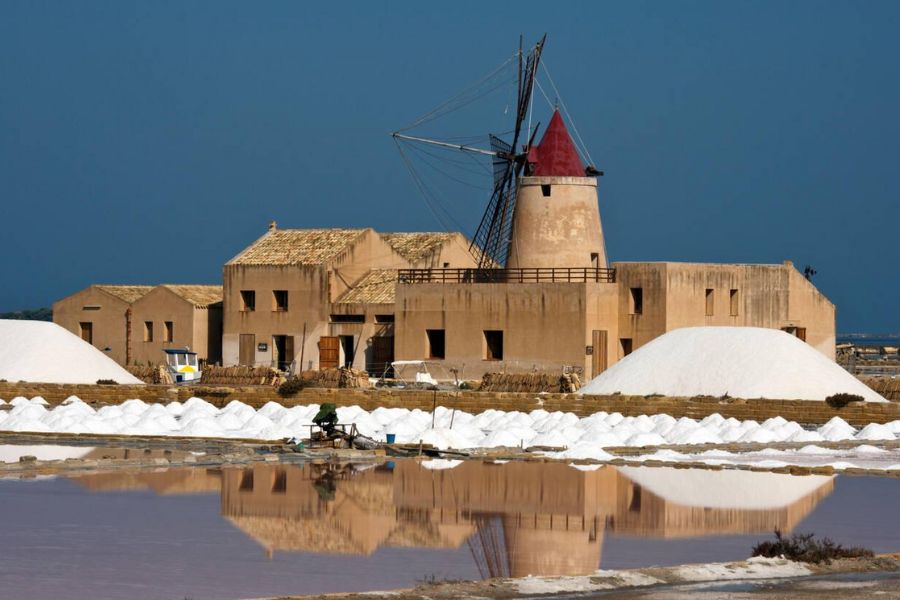
My travels through Western Sicily didn’t feel complete until I dove into Marsala’s winemaking traditions and tasted its bold olive oil and regional dishes. Vineyards reach out toward Salemi, Segesta, and Sciacca, painting a landscape shaped by generations of care and craft. When you visit, you’ll get why locals call it “The Harbour of God”—there’s something almost heavenly about its beauty and abundance.
Marsala’s Historic Roots and Punic Heritage
Marsala’s ancient streets pulse with history that stretches back thousands of years. Every step I take, I sense the echoes of those who shaped this western Sicilian gem.
Founding of Marsala and Ancient Civilizations
Marsala’s story kicks off around 400 BC, but people lived here long before that. Its spot on Sicily’s western tip made it perfect for trade and settlement.
The city’s name comes from the Arabic “Marsà ‘Alī,” meaning “Port of Ali.” It just shows how vital the port was.
Before the Arabs, the Romans ran the show and called it Lilybaeum. They saw it as a key port linking Africa and Europe.
What grabs my attention most? Each new civilization built right on top of the last.

When I stroll Marsala’s center, I spot Roman remnants next to medieval buildings. History here feels stacked, with old streets still following ancient patterns.
Phoenicians, Elymians, and Carthaginian Influence
The Phoenicians, those legendary sailors and traders, set up shop here around the 8th century BC. Marsala became a crucial trading post in their Mediterranean web.
The native Elymians, one of Sicily’s oldest peoples, mixed and mingled with these newcomers. This blend sparked a unique local identity that still pops up during festivals.
Later, Carthage—founded by Phoenicians in North Africa—took over western Sicily. Marsala turned into a key stronghold during the Punic Wars with Rome.
You can still see Carthaginian influence in the region’s building styles and artifacts.
At Marsala’s archaeological museum, I’ve gazed at beautiful Punic artifacts: delicate jewelry, ornate pottery, and ritual objects that whisper stories from thousands of years ago.
Archaeological Parks and Heritage Sites
Mozia (or Motya) stands out as the crown jewel of Punic heritage near Marsala. This old Phoenician colony sits in the Stagnone Lagoon. I always suggest taking the short boat ride—suddenly you’re in an open-air museum with ancient walls, homes, and a tophet (sacred burial ground) still standing.
The Motya Charioteer sculpture, found here in 1979, is a stunner. It shows Greek influence on Punic art. The original now lives in Marsala’s museum, but seeing the spot where it was found adds a certain magic.
In Marsala itself, you can walk through areas where Punic walls and districts still survive. The preserved Decumanus Maximus, the main Roman road, really struck me—it follows even older Punic paths.
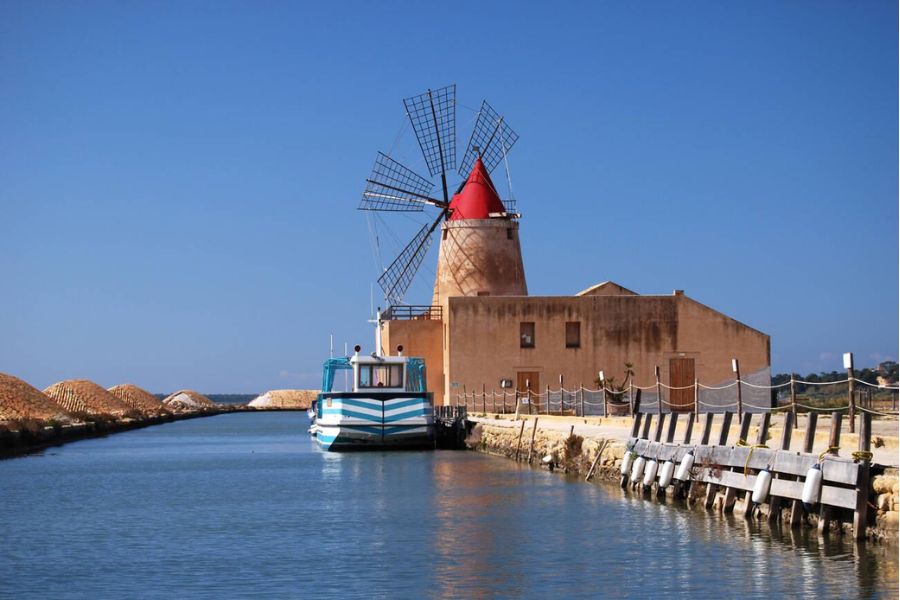
Just off the coast, the underwater archaeological park hides shipwrecks and maritime relics. Some tours let you peek at these submerged treasures, offering a unique window into ancient naval battles and trade.
Wine Country: Viticulture and Marsala Wine
Western Sicily’s vineyards create a patchwork landscape, and the winemaking tradition here just thrives under the Mediterranean sun. Marsala’s wine story really took off in 1796 when Englishman John Woodhouse saw the potential of local wines and brought in fortification techniques.
DOC Regulations and Traditional Wine Making
Marsala wine got its DOC (Denominazione di Origine Controllata) status in 1969, which helps guarantee quality and authenticity. The rules sort Marsala wines by color, sweetness, and aging.
Fine Marsala needs to age at least a year. Superiore gets two years, and Superiore Riserva must spend four years in wooden casks.
Some producers still use the old solera system. Barrels stack in tiers, and they blend younger wines into older ones. I’ve watched experts taste from different barrels, tweaking the blend to keep the flavor consistent year after year.
Walking through cellars carved into tuff stone, I’ve seen how old-school methods and new tech work side by side. They fortify the wine with brandy or neutral alcohol, which gives Marsala its signature character.
Vine Varieties and Terroir of Western Sicily
The main grape varieties for Marsala wine are:
- Grillo: The star, bringing structure and acidity.
- Catarratto: Adds some body and fruity notes.
- Inzolia: Lends aromatic touches.
Western Sicily’s terroir is just right for these grapes—chalky soil, mild winters, and hot summers softened by sea breezes. The calcareous ground around Marsala gives the wines a mineral kick that I find unforgettable.

Vineyards here bask in over 300 days of sunshine, with Mediterranean winds cooling things down and helping grapes keep their acidity. I’ve noticed that plots closest to the sea produce wines with a hint of saltiness, which really balances their sweetness.
Vineyard Tours and Wine Tasting Experiences
I’ve visited historic wineries like Florio, Martinez, and Pellegrino. They all offer guided tours through their production spaces and aging cellars. The giant oak barrels—some over a hundred years old—still shape the flavor of Marsala as it ages.
Most tours end with tastings. You’ll see how Marsala shines as a dry aperitif or a sweet dessert wine. I always suggest sampling different aging levels to really get how the flavors change over time.
Many estates now offer vineyard walks. You can see how they cultivate the grapes up close. If you come during harvest (August-September), you’ll catch the buzz of grape picking and selection.
Some wineries have turned historic buildings into elegant tasting rooms. There, you can pair Marsala with local treats like almond pastries or savory caponata.
Cultural Landmarks and Artistic Heritage
Marsala’s rich past is right there in its streets and buildings. Phoenician, Roman, Arab, and Spanish touches all blend together, creating a cultural tapestry that’s hard to miss.

You’ll spot architectural gems, museums packed with ancient treasures, and religious monuments that tell Sicily’s tangled story.
Architecture and Baroque Buildings
When I walk Marsala’s historic center, those honey-colored tufa stone buildings always catch my eye. The city glows in the afternoon sun.
Piazza della Repubblica, the main square, is the social heart. It’s ringed by impressive palazzos and the imposing Palazzo VII Aprile, with its bold arches and columns.
Marsala’s architecture really shows its layered history. The Spanish Quarters, with their strict street grid, reflect the city’s military days. Then you’ve got elegant baroque buildings lining Via XI Maggio, where aristocrats once flaunted their wealth with ornate balconies and fancy facades.
The Florio family mansions stand as reminders of the 19th-century wine boom. Their style mixes neoclassical and local Sicilian touches, creating something you won’t see anywhere else.
Museums, Art, and Archaeological Treasures
The Museo Archeologico Baglio Anselmi guards Marsala’s greatest treasure: a preserved Punic warship from the First Punic War. Dating to 241 BCE, it’s a rare piece that connects you to ancient naval battles fought right here.
The museum also displays mosaics, pottery, and finds from nearby Mozia.
If you’re into local art, the Civic Museum shows off Sicilian paintings, crafts, and traditional decorative arts. I especially love the coral jewelry collection—this craft thrived in western Sicily for centuries.
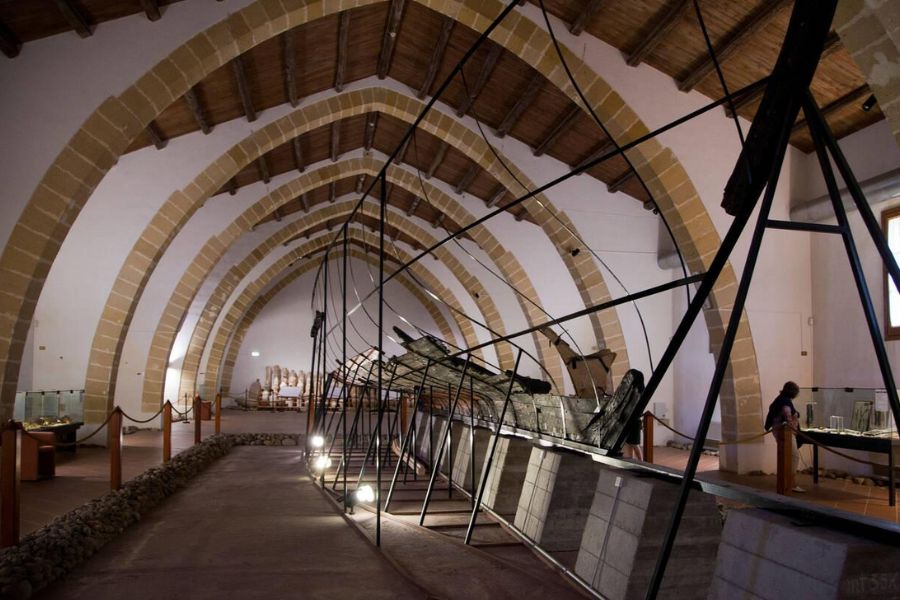
Just outside Marsala, the archaeological site of Mozia (ancient Motya) lets you step into the world of the Phoenicians. The Whitaker Museum on the island displays the “Youth of Mozia,” a marble statue from the 5th century BCE that blends Greek and Phoenician artistry in a way that’s honestly breathtaking.
Religious Sites and the Dome
Marsala’s Cathedral, dedicated to St. Thomas of Canterbury, dominates the skyline with its striking dome. Built in Norman times and revamped in the baroque era, the cathedral’s peaceful interior always draws me in. Sunlight filters through stained glass and dances on marble altars.
The Church of Purgatory keeps beautiful wooden sculptures that come out during Easter processions—a tradition that goes back generations. These processions still matter deeply in Marsala’s culture.
San Giovanni Battista Church, near the old baptistery, reveals layers of history. You can spot remains of an early Christian basilica beneath the current church. The underground chambers hold archaeological finds from Punic, Roman, and Byzantine times.

The Madonna della Cava Sanctuary, built around a sacred grotto where a miraculous icon was found, really captures Marsala’s religious spirit. The mix of natural cave and ornate décor gives the place a mystical vibe that ties today’s worship to ancient roots.
Sicilian Flavors: Cuisine, Gastronomy, and Local Products
Sicily’s food scene is a wild tapestry of flavors shaped by centuries of cultural mashups. The island’s geography and history have cooked up one of the world’s most unique culinary traditions.
Traditional Sicilian Cuisine and Dishes
Sicilian food is fusion at its core, blending Greek, Arab, Spanish, and Italian influences. In local trattorias, I discovered that many dishes carry stories from Sicily’s complicated past.
The Arab touch pops up in sweet-and-sour combos like caponata—eggplant, vinegar, and sugar all mingling together. I found pasta con le sarde (pasta with sardines) fascinating, with wild fennel, pine nuts, and raisins.
Arancini—those golden, fried rice balls—became my go-to snack. Filled with ragù, peas, and cheese, they’re basically the perfect portable meal.
Cannoli, with their crispy shells and sweet ricotta, show off the island’s dessert skills. Many bakers still use Marsala wine in the dough, which gives the pastry its signature lightness.
Local Products: Salt Pans, Cereals, and Olive Oil
Near Marsala, the Stagnone lagoon hosts some of Sicily’s most scenic salt pans. I watched workers harvest sea salt using methods handed down since Phoenician days. The salt flats, with their white mounds against the blue sky, are a sight I won’t forget.
Sicily’s rich soil grows amazing wheat. The island once fed Rome, and today its durum wheat makes top-notch pasta and bread. Local farmers take pride in ancient grains like Timilia and Russello.
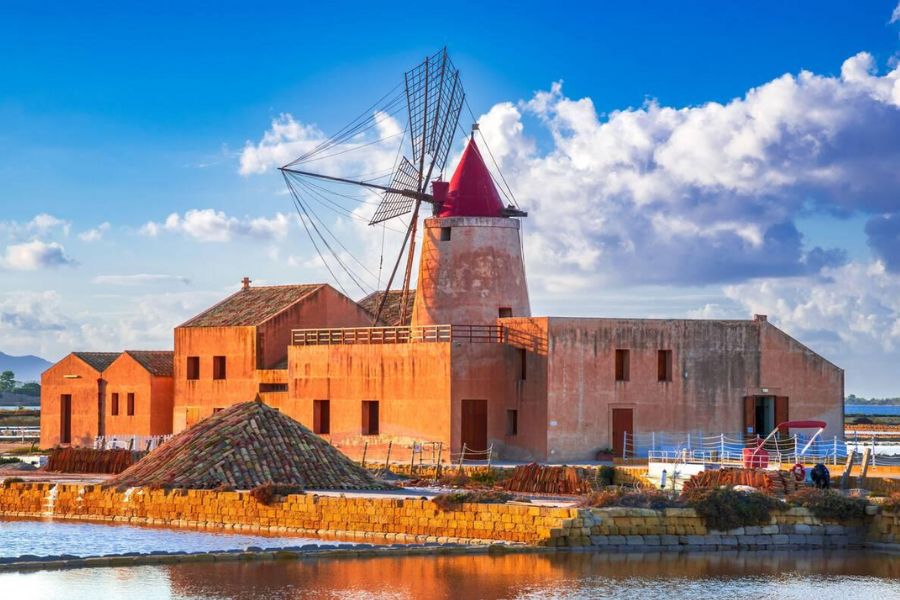
Olive oil here has a long history. I tasted oils with a peppery kick you just can’t find in the supermarket. Many producers still use traditional cold-pressing, locking in flavor and health benefits.
Pairing Marsala Wine with Sicilian Food
Marsala, Sicily’s iconic fortified wine, brings a surprising versatility to the table, especially with local dishes. I found out it comes in several styles—dry (secco) and sweet (dolce)—and each one pairs with different foods in its own way.
Dry Marsala really shines with savory plates. I tried it with pasta con le sarde and grilled swordfish, and those nutty notes somehow made the seafood even better.
Sweet Marsala? That’s a dream with traditional Sicilian desserts:
- Cannoli bursting with sweet ricotta
- Cassata loaded with candied fruits and sponge cake
- Almond pastries and crumbly cookies
When you cook with Marsala, the flavors can be magical. Chicken marsala and zabaglione, this light custard, both let the wine’s character take center stage. Local chefs showed me how they reduce it slowly, which pulls out those deep flavors of dried fruits, vanilla, and nuts.
Wider Western Sicily: Day Trips and Unmissable Destinations
Western Sicily made day trips from Marsala feel like a grand adventure. The region bursts with everything from medieval hilltop towns to wild beaches, mixing culture and nature in ways I didn’t expect.
Trapani, Erice, and the Aegadian Islands
Trapani sits just 30 minutes north of Marsala, and its crescent-shaped old town and busy port instantly drew me in. Between Trapani and Marsala, the salt pans stretch out, dotted with windmills and pools that turn pink at sunset.
Up above Trapani, Erice perches in the clouds. I wandered its misty cobblestone lanes, feeling like I’d slipped into another era. On a clear day, the views reach all the way to Tunisia—seriously, it’s wild.
The Aegadian Islands (Egadi) call for a boat trip from Trapani. Favignana wowed me with its blue-green waters at Cala Rossa. Levanzo, the tiniest island, hides ancient cave paintings in Grotta del Genovese that honestly left me stunned.
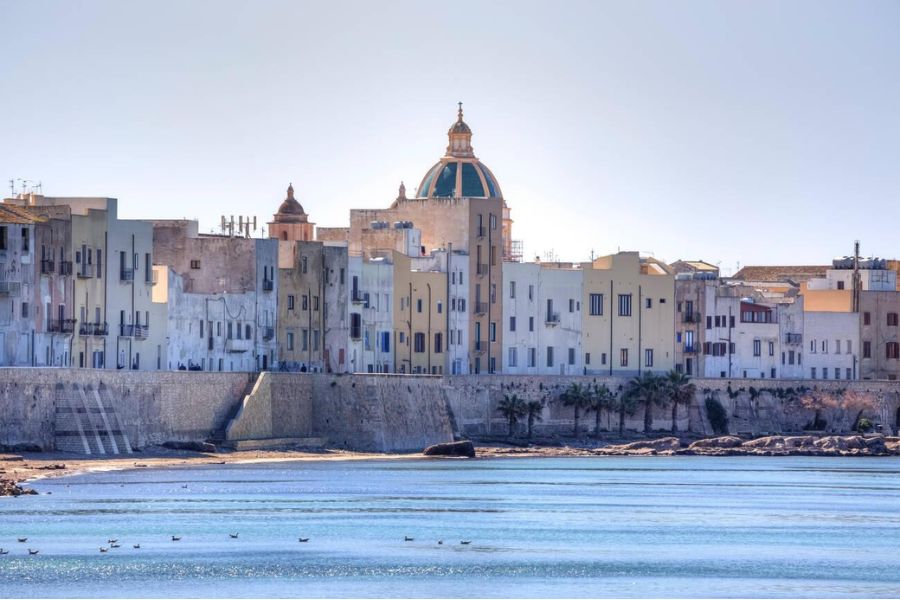
Best time to visit: Spring and early fall give you perfect weather and a break from the summer crowds. I’d aim for those if you hate packed beaches.
Mozia and the Stagnone Lagoon
Mozia sits on a tiny island in the Stagnone Lagoon, and discovering this ancient Phoenician site felt like stumbling on a secret. I hopped on a boat from Marsala’s waterfront, and suddenly I was surrounded by ruins from 800 BC.
As I walked among toppled stones and wildflowers, I felt like I’d traveled back in time. The museum on the island displays the “Youth of Mozia,” a stunning Greek-style statue that hints at the mix of cultures Sicily once knew.
The lagoon itself is something else. Shallow, clear water stretches as far as you can see, and salt harvesting here still happens the old-fashioned way. When the sun sets, the salt flats turn pink and orange—a photographer’s dream.
Local tip: Pop into the salt museum to get why this “white gold” made the area rich.
Seaside Escapes and Nature Adventures
San Vito Lo Capo’s white sandy beach could go toe-to-toe with any Caribbean shoreline. Its gentle curve and turquoise water make it a real showstopper. Every September, the town throws a couscous festival that draws flavors and people from across the Mediterranean.
Scopello charmed me with its old tuna fishery (tonnara) and those wild sea stacks jutting out of the water. Right next door, Zingaro Nature Reserve offers hiking trails with views that honestly made me stop and stare.
If you want something totally different, try a boat trip to Pantelleria, Italy’s “Black Pearl.” The volcanic landscape sits between Sicily and Africa, offering steaming thermal springs, wild coastline, and Passito wine that’s almost too sweet.
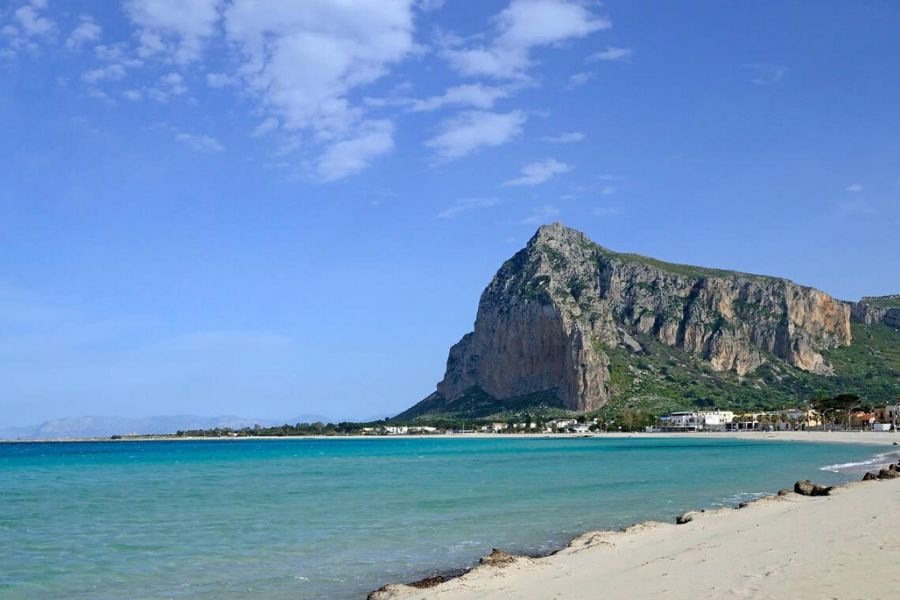
When I needed a break from the coast, Lake Arancio offered calm and quiet. I walked the lakeshore, spotting birds and soaking in the peace—sometimes you just need a spot like that.
Historic Villages and Nearby Towns
Mazara del Vallo really surprised me with its Tunisian-influenced kasbah quarter. I wandered through narrow, winding streets that led to courtyards filled with majolica tiles and Arab-inspired buildings.
And then there’s the Dancing Satyr—a bronze statue they pulled from the sea. You just have to see it.
Medieval Salemi feels like the real deal, with its Norman castle and old Jewish quarter. I joined locals for their evening passeggiata.
Honestly, I found the best cannoli of my whole trip at this tiny family bakery tucked away on a side street.
Sambuca di Sicilia, which folks say is one of Italy’s most beautiful villages, totally charmed me. Its Baroque churches and palazzi catch the light in a way that’s hard to describe.
Not far from there, the ruins of Entella sit dramatically on a mountain plateau. The view alone made the trek worthwhile.
These smaller towns show off Sicily’s tangled mix of Greek, Roman, Arab, and Norman influences. And best of all, you don’t have to fight through tourist crowds to feel it.

